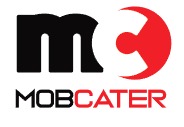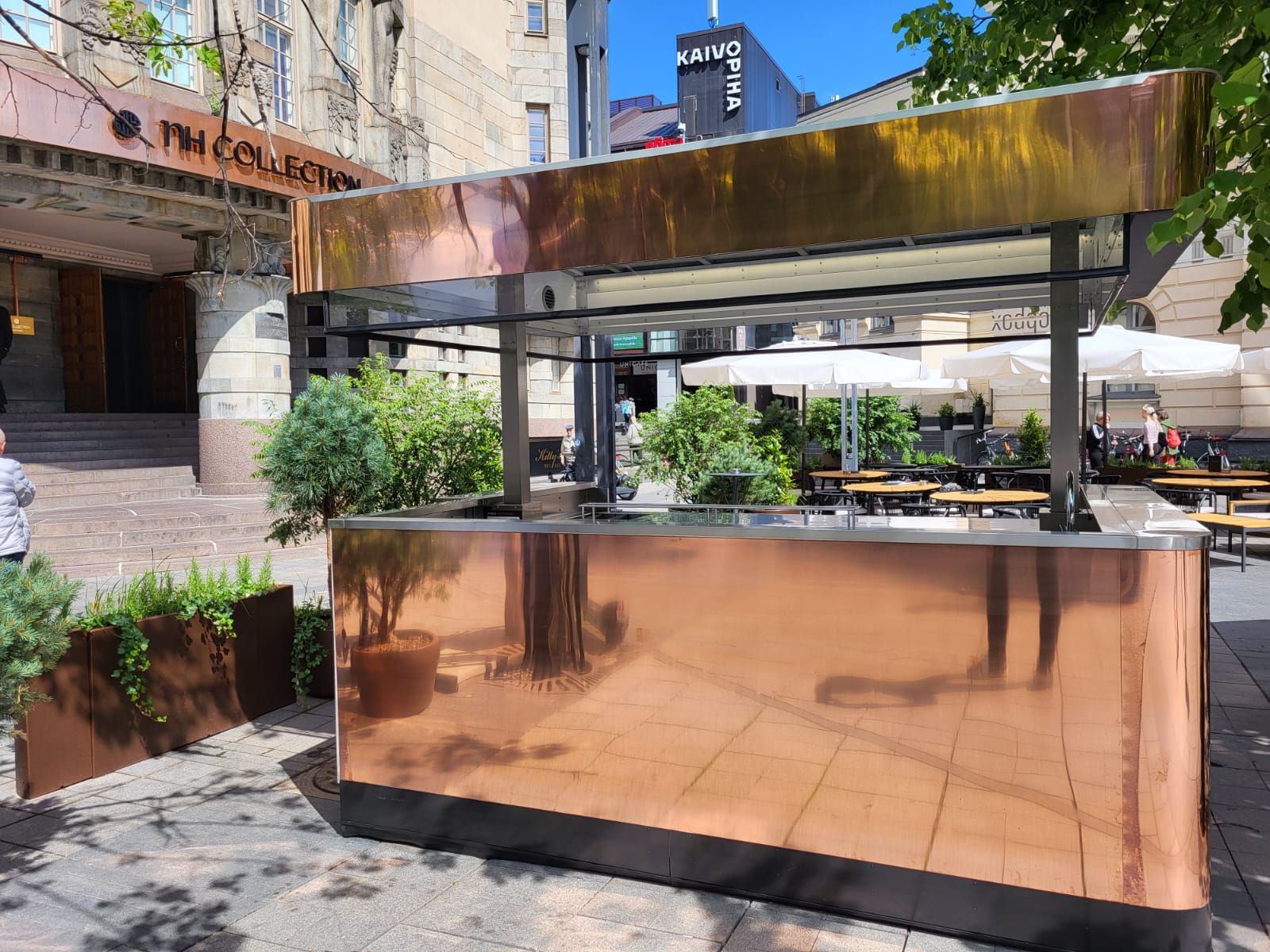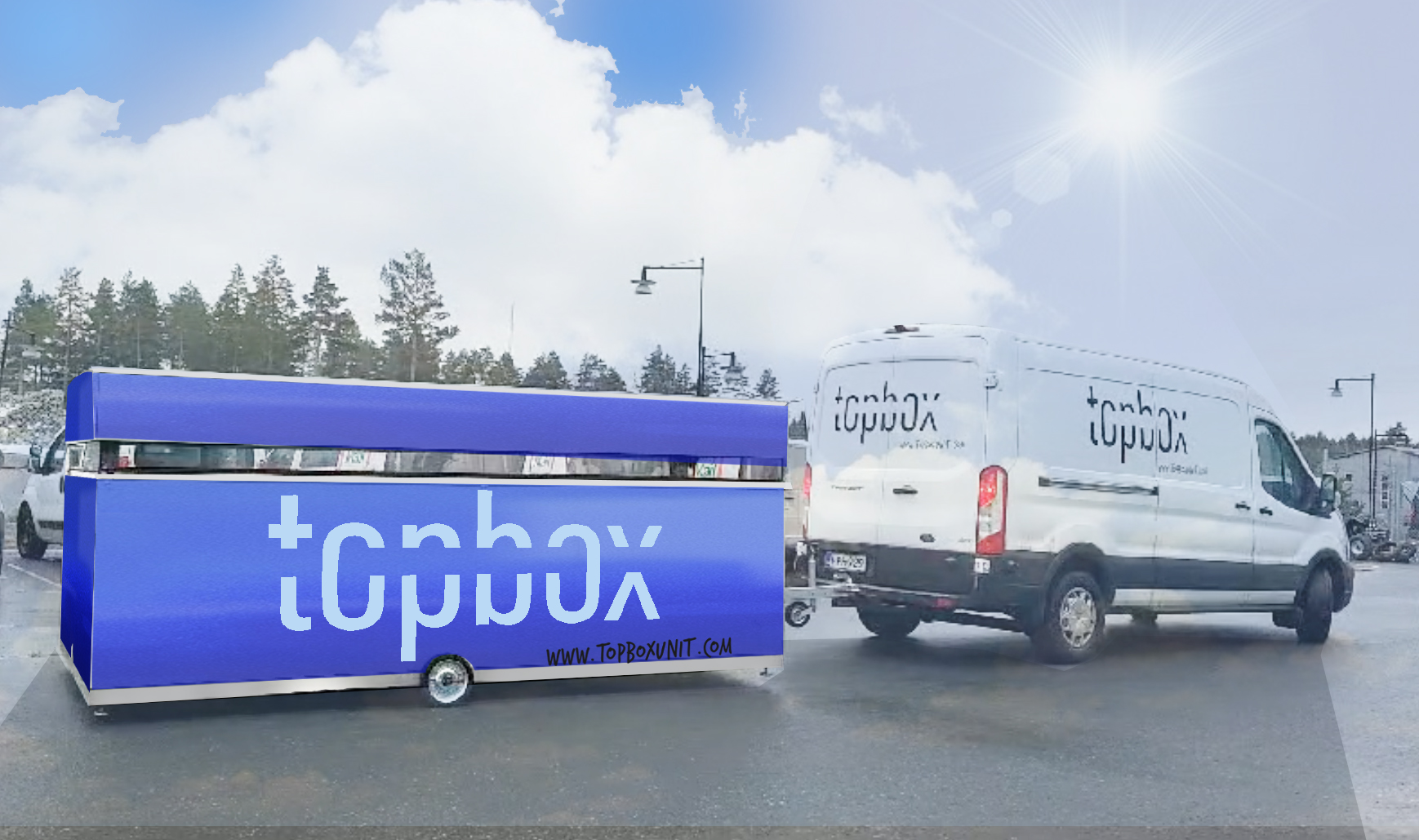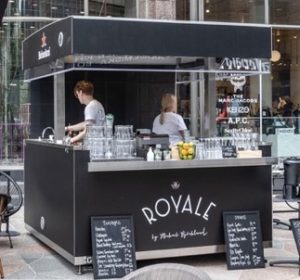Topbox All-Season Mobile Food Bars
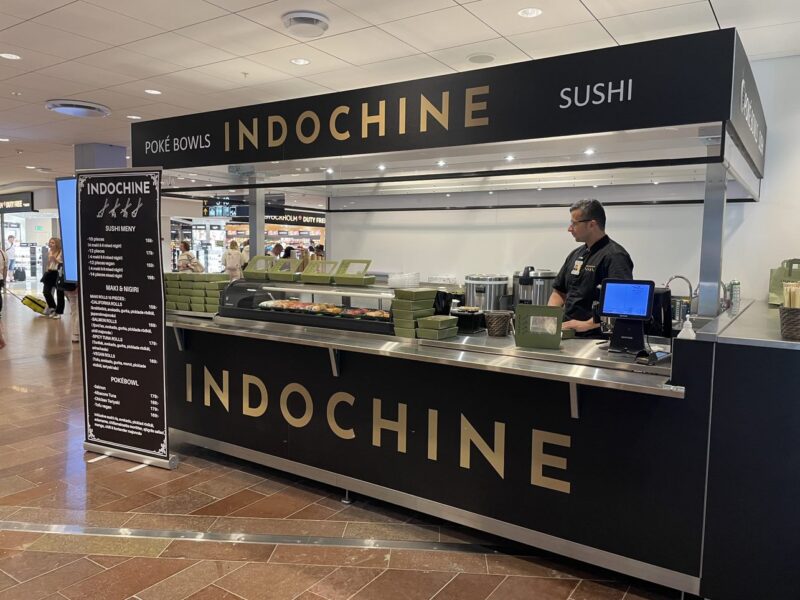
If you’ve ever tried running a bar or café outdoors, you’ll know the weather is always out to get you. One minute it’s sunny, the next it’s raining sideways. That’s where Topbox stand-alone bar units come in. These mobile food bars are built for all seasons, so you don’t have to pack up every time the weather changes. They’re also pretty easy to move around, whether you’re on a rooftop, a terrace, or even inside a shopping centre. Basically, these units let you keep serving food and drinks wherever your customers are, all year round.
Key Takeaways
- Topbox stand-alone bar units work both indoors and outdoors, no matter the season.
- You can set up, open, and close these units in just a few minutes, which makes daily operation simple.
- There are lots of ways to customise the look and layout, so your bar fits your brand and menu.
- Moving a Topbox unit to a new spot is easy, and you don’t need to worry much about building permits.
- They’re made to last, with certified materials and a focus on sustainability, so you get good value over time.
Stand-Alone Bar Units for Every Season
When you run food and drink operations, the seasons can make or break your plans. Topbox stand-alone bar units are built for all types of weather — sun, rain, and everything in between. Whether you’re launching a brunch bar on a sunny roof or moving inside during winter, these bars have you sorted.
Weatherproof Construction for Year-Round Use
Topbox units don’t just look robust; they really are. Their weather-tight structure means you can set up shop outdoors without worrying about rain or snow creeping in where it’s not welcome. Doors, roofs and joints are designed to keep your staff and equipment dry and safe.
Here’s why people choose Topbox for year-round trade:
- Tested and proven for four seasons, even in the Nordic climate
- Materials that resist rust and water damage
- Reliable electric systems that cope with moisture and cold
- Insulated panels for comfortable working temps inside
Sometimes it’s chucking it down or blowing a gale, but inside a Topbox, you feel like you’ve taken the weather out of the equation. Service goes on, no drama.
Benefits of All-Season Flexibility
There’s a lot to be said for versatility in hospitality. One day you’re pulling pints on a festival field, the next you’re serving espresso martinis in the city centre. Topbox units make that possible — and practical:
- Open and close quickly as the weather changes (raise the roof for sun, seal it shut against rain)
- Move easily between locations as demand shifts throughout the year
- Operate outdoors in summer, roll into malls or atriums for winter events
You’re not locked in to just outdoor or indoor service. This kind of flexibility keeps the bookings coming, whatever the forecast.
You can get more real-world advice on using mobile bars for different business seasons from guides like practical catering business tips, which share hands-on experience with mobile concepts.
Easy Setup and Daily Operation
Setting up a Topbox doesn’t need a squad of engineers or a weekend of heavy lifting. Most units arrive ready to go — just wheel them into position, sort your power and water lines, and you’re away.
Typical setup steps:
- Park and lock the unit at your site.
- Connect to mains electric (well-protected 16A sockets).
- Stock up your drinks, food, or coffee machines.
- Lift the top, unlock the hatches, and your bar is open.
And at the end of the day, reversing the steps takes minutes. No lugging furniture back inside or wrestling with giant tarpaulins in the wind.
| Topbox Model | Customer Seats | Footprint (cm) | Approx. Weight (kg) |
|---|---|---|---|
| Bar/Café 23 | Up to 50 | 230 x 230 | ~590 (+300) |
| Bar/Café 29 | Up to 100 | 230 x 290 | ~690 (+300) |
| Bar/Café 41 | Up to 200 | 230 x 410 | ~790 (+350) |
You’re sorted for anything from a quiet local pop-up to a bustling outdoor event, whatever the month.
High-Quality Design and Customisation Options
Choosing a bar that fits your vision shouldn’t mean compromising on quality or flexibility – and that’s where Topbox stands out.
Tailored Interiors and Exteriors for Your Brand
The beauty of a Topbox unit is how much you can make it your own. Whether you want a sleek stainless steel finish or quirky timber panelling, everything from the serving hatch to the flooring is fully adjustable. Customising your unit isn’t just about the look though.
- Select materials and colours to match your branding.
- Add or remove windows, counters, or storage as needed.
- Choose signage and lighting to suit day or evening trade.
If you’re a designer searching for a blank slate, Topbox even offers empty shells—perfect for fitting out with completely bespoke interiors. This way, architects can control every detail, with support from the Topbox team and access to 2D/3D files for streamlined planning.
Flexible Layouts for Food, Drink or Coffee Service
No two businesses are exactly alike, and neither are their Topbox layouts. You might want an espresso corner for a morning pop-up, or a double-sided bar for quick festival service. The beauty here is how easily units adapt – even adding a cheese grilling station or fryer is straightforward, following practical tips from trusted UK suppliers.
Flexible units let you switch between food, drink, or both without a major refit, making shifts in menu or concept much more affordable.
Here are some popular layouts:
- Compact drinks bar for terraces and rooftops
- Mobile café with cake display and cold storage
- Full kitchen pod with extraction, sinks, and extended prep space
Choosing the Right Size and Configuration
One of the most common questions: How big is big enough? Topbox makes it simple, with three clear unit sizes for their bar, café, ice cream, and kitchen models. Here’s a quick glance at capacity and footprint:
| Model | Max Seats | Size (cm) | Weight (kg) |
|---|---|---|---|
| Topbox 23 | 50 | 230 x 230 | 590–600 + 300 |
| Topbox 29 | 100 | 230 x 290 | 690–700 + 300 |
| Topbox 41 | 200 | 230 x 410 | 790–800 + 350 |
For small events, 50 seats might be all you need. If you’re launching in a high-volume spot like a mall or summer venue, 100 to 200 would suit better. And because every Topbox has roof lift and LED lighting as standard, you don’t have to stress about basics—pick the configuration, move in, and start trading.
Many people discover just how much having the right layout impacts staff flow, speed, and ultimately how much you can sell per hour. If you start with a space that fits your audience and team, the workday just runs smoother – less bumping elbows, less back and forth for supplies, and a much more comfortable shift.
No matter what the plan is, there’s a Topbox layout that’ll fit, and you can always tweak exteriors or equipment down the line. That’s real flexibility, built for everyday business.
Mobility and Versatility in Any Setting
When it comes to mobility, Topbox units really make life easier for hospitality operators. These bars are not fixed in place the way most container kiosks are. You can wheel them around by hand for short moves or tow them with the right accessories for a change of venue. This flexibility means less fuss about where the bar should go or whether you’ll outgrow your current location next month.
A few ways Topbox stands out in mobility:
- Lightweight build keeps transport manageable
- Compact design lets you squeeze into tight or awkward spots
- All the kit inside the box travels with it — no repeated packing
If you’ve ever wondered about other moving challenges (like power or water), you’ll find helpful info discussed by others in the mobile catering world on mobile catering trailers Q&A.
Topbox units are designed for nearly any setting you can imagine:
- Rooftop terraces, ideal for sunny or rainy days
- Outdoor patios or beer gardens that change layout with the seasons
- High foot traffic spots indoors, like shopping centres or exhibition halls
- Event spaces – pop-up festivals, shows, even corporate parties
The best part? If outdoor trade slows for the winter, just roll the Topbox inside. It really is all-season.
Being able to move your food or drink business with almost zero disruption feels like cheating the normal rules of hospitality.
No one likes paperwork, especially when a plan changes at short notice. Luckily, Topbox units are considered temporary structures in most cities, which means permit headaches can be kept to a minimum. This helps businesses:
- Start selling sooner, without months of waiting for approvals
- Avoid expensive or difficult building work
- Relocate (or even rent out) the bar unit if business shifts or you want a new crowd
Here’s a quick look at what sets Topbox apart:
| Feature | Standard Kiosk | Topbox All-Season Unit |
|---|---|---|
| Installation Time | Weeks | 1-2 days |
| Permit Complexity | High | Low/moderate |
| Relocation Effort | Not practical | Easy (tow/hand move) |
| Fixed Utility Hookups | Always needed | Usually flexible |
If you’re tired of being boxed in, a Topbox could be the bit of freedom your business is looking for.
Safety, Sustainability and Compliance
When you’re investing in a mobile food bar that’s going to see all sorts of action, safety and quality can’t be ignored. Every Topbox unit comes equipped with proper certifications. From the main frame to the finishing touches, each element has met strict EU directives—including CE marking for machinery and electrical systems. That means you’re not just getting any bar, you’re getting peace of mind that your unit is up to standard, indoors or outdoors.
A big plus: Documentation and safety protocols are included from day one, so even newcomers find it straightforward.
- All surfaces are burglar-resistant and hygienic.
- You get clear guides for setup and operation.
- Maintenance is made simple, cutting down on daily headaches.
If you’re dealing with food or coffee on the move, you’ll appreciate that everything is easy to keep clean and trouble is less likely to strike thanks to certified suppliers. When it comes to food service regs, you can check off all the key criteria by using registered, weatherproof equipment and up-to-date food safety management systems just like those seen in reputable portable businesses (safe methods for reheating and hygiene).
Circular Economy Principles in Production
Topbox doesn’t just build bars to last—they’ve designed them so no piece goes to waste when change eventually comes. The production process uses circular economy thinking: swap parts, repair as needed, and when the bar’s reached the end, send those bits back into useful life rather than landfill. This mindset isn’t just good for the planet—it’s good for your upfront investment.
| Principle | Example |
|---|---|
| Repair over replacement | Modular panels and locks easily swapped |
| Responsible sourcing | Certified wood and fittings |
| Designed for recycling | Steel and aluminium frames fully recyclable |
When you combine robust design with a recycling-first attitude, your Topbox stays valuable for years without the usual risk of planned obsolescence.
Longevity and Resale Value of Units
The truth is, a mobile bar should last much longer than a few festival seasons. Topbox units usually reach beyond a decade of active life. Because they’re durable and modular, people can resell them at a solid price—even after years of regular use.
Why the high resale value? Here’s what stands out:
- Components and materials stay strong year after year, even in tough weather.
- All units are designed to be reconfigured for new purposes or to fit another business.
- Maintenance is low-effort, which helps them stay presentable and operational.
These bars don’t lose their usefulness quickly—making them a fair bet for anyone thinking about the big picture, not just next season’s profits.
So if you want a mobile bar that offers safety, ethical production, and real staying power, the Topbox route covers all your bases without extra fuss.
Maximising Profitability with Stand-Alone Bar Units
First impressions matter when it comes to food and drink, and a stand-alone Topbox bar catches the eye right away. A sharp, branded exterior stands out in busy places like festivals, hotel gardens, or retail pop-ups. Customers walk over simply because it looks inviting—half the job done for you. People also like to see who is serving them, so the open layout means staff and customers are face-to-face. That adds a friendly touch and builds trust quickly.
Benefits include:
- Rapid setup: Start trading minutes after arrival.
- All-weather use: Keep selling in sun, rain, or snow.
- Easily relocated to test different footfall zones.
| Location | Typical Daily Sales* | Customer Traffic |
|---|---|---|
| Hotel Terrace | 120-200 portions | High |
| Summer Festival | 300-350 portions | Very high |
| Shopping Centre | 80-130 portions | Moderate to high |
*Based on operator reports.
If you want more people at your bar, making it visible and approachable is half the battle. Topbox units tend to become the local hotspot wherever you put them.
When you’re busy, every second counts. The Topbox is built for simple, efficient operation by minimal staff. No time lost finding power or bringing in equipment—just unlock, pop the roof, plug in, and you’re off. Everything fits neatly: your fridge, ice machine, till, and glasses are all within arm’s reach. In quiet periods, sealing up the structure takes little effort, so staff can move on to other tasks or close the bar for just half an hour if the weather turns.
Key efficiency gains:
- One or two people can run the entire bar—even on busy nights.
- Quick close-down means no need to pack up every tiny piece of equipment.
- Pre-installed sinks and electrics save on costly upgrades or site work.
It’s not just bars that see a difference. Stand-alone food and drink units have a real effect across events, markets, and hospitality venues. Being able to move the Topbox about (spring wedding one week, Christmas fair the next) means it keeps earning all year. The investment isn’t stuck in one spot or in one format.
A few real-world wins for operators:
- Suddenly extend service to outdoor spaces on sunny days.
- Take advantage of high foot traffic at events with temporary setups.
- Offer street food, cocktails, or coffee from the same space—switching menus or concepts on demand.
In short, the Topbox isn’t just a bar or kitchen—it’s flexible revenue, ready to work where and when you need it.
In a world where margins are thin, having a setup that adapts as quickly as you do is much more than a convenience—it’s just good business sense.
Real Experiences with Topbox Mobile Bars
Topbox mobile bars aren’t just an idea on paper – plenty of venues actually rely on them every single day. From city-centre terraces to busy event spaces, people are seeing real results. Below, you’ll find out how Topbox fits into the lives of operators and their teams.
Customer Success Stories Across Venues
You’ll hear some operators go on about how Topbox helps them keep things simple and practical. For example:
- A terrace bar in Helsinki managed to triple its serving speed during summer, allowing just one person to handle up to 350 food orders on peak days.
- Several venues have switched between food and drinks service in the same Topbox unit, moving each bar by hand (with the proper accessories) even when the weather changes or business moves indoors.
- One popular event organiser claims the bar can be opened or closed in under two minutes, cutting down on setup stress and staff time.
It’s clear the ability to relocate and adapt in minutes is a real advantage for growing venues. If you think your team could benefit from similar hands-on ideas.
Bartender-Friendly Workspaces
Let’s talk about the space inside. Bartenders and kitchen staff aren’t shy about giving their honest feedback. Here’s what keeps coming up:
- Integrated devices make it easy to keep things tidy
- The layout makes quick service much easier, with everything within arm’s reach
- Cleaning is fast and takes little effort at the end of the day
One bar manager even told us, “It just takes one staff member to prep the whole bar for the day, instead of a whole crew.”
When the doors roll open and the roof lifts, you’re basically ready to go. There’s no stuffing bottles into crates or dragging fridges back and forth – it’s all built-in.
Impact on Business Growth and Flexibility
Topbox units truly are built for change. Owners appreciate not having to commit to a static setup. Some reported:
- Increased takings during festival periods (especially thanks to higher throughput)
- The chance to try out new menu ideas or drinks offers, just by reconfiguring inside
- Reduced downtime – when one event ends, the bar can be wheeled to its next spot that very afternoon
These bars are keeping pace with businesses that want results quickly, without needing a new build. And if you plan to resell later, Topbox units hold their value remarkably well.
So, you could be serving cocktails on a rooftop one month, then set up shop inside a bustling winter market the next – no sweat. That’s genuine flexibility, and it’s why venues come back for more.
Innovative Solutions for Architects and Designers
If you’ve ever tried to fit someone else’s idea into your own project—especially under a deadline—you know how frustrating it gets. Topbox stands out for architects and designers because of how flexible and open their mobile bar units actually are. There’s a lot to unpack here if you’re planning a unique hospitality space, a quirky event corner, or a stylish roof terrace bar. Let’s break down what makes Topbox such a good starting point for design-led ventures.
Empty Units for Bespoke Concepts
Topbox offers completely empty units in three different sizes. It’s a blank slate, ready for your flair—no more fighting against awkward fixed interiors. Each bare unit includes:
- Integrated electrical connection (16A), so you don’t have to plan complicated wiring
- Roof-lifting mechanisms, so you can work with open or closed layouts
- Locks and LED lighting as standard
That means you can decide every detail on both the inside and outside, from bespoke counters to custom cladding, all without the risk of structural headaches.
When you’re in charge of the look and feel, it’s nice to start with something that’s not fighting your plans at every step.
Integration of Branding and Technology
Making a mobile food bar look like it was always meant to fit a venue or match a brand identity is more important than ever. Topbox makes this easier by supporting:
- 2D and 3D CAD files available for rapid design iterations
- Easy to mount signage, lighting, print or digital screens
- Cladding and finish options that can take on almost any material, including wood, copper, or foils
This flexibility helps designers match the pop-up to a café chain one month and a high-spec cocktail event the next. Plus, plugging in ordering tech or point-of-sale systems is straightforward (thanks to that built-in power connection). It’s all about making your design idea shine without wrestling with prefab constraints.
Ready-to-Go Essential Models for Faster Roll-Out
Sometimes your client just wants it done. Topbox has ready-equipped bar, café, ice cream or kitchen models, which you can still tweak on the outside. This means:
- Three core sizes (see table below) available for fast projects
- Interior layouts optimised for food, drink or coffee service
- Focus on exterior design—wrap, paint or brand as needed
| Model | Footprint (cm) | Customer Seats |
|---|---|---|
| Topbox 23 | 230 x 230 | up to 50 |
| Topbox 29 | 230 x 290 | up to 100 |
| Topbox 41 | 230 x 410 | up to 200 |
Whether it’s a one-off kiosk or you’re rolling out a mini-chain, having standard models to start with (and then customising the rest) skips a lot of hassle.
So, if you’re an architect or designer sick of the barriers with typical mobile bar units, Topbox gives you back control. Start blank or tweak a proven layout, integrate tech and branding easily, and actually enjoy the process of bringing your concept to life.
Conclusion
So, after looking at what Topbox all-season mobile food bars can do, it’s pretty clear they’re not just a passing trend. These units are proper workhorses. You can set one up almost anywhere—on a terrace, at an event, or even inside a shopping centre when the weather turns. They’re easy to move, quick to open and close, and you don’t need a team of people to run them. I’ve seen stories from folks who’ve used them for years, and they all seem to agree: Topbox saves time, keeps things simple, and just works. If you’re thinking about starting a new food or drink spot, or you want to add something flexible to your business, Topbox is worth a look. It’s one of those things you don’t realise you need until you try it, and then you wonder how you managed before.
Frequently Asked Questions
Can Topbox food bars be used outside all year round?
Yes, Topbox units are made to handle all weather. They are tested in tough Nordic conditions and can be used both inside and outside, no matter the season.
How easy is it to move a Topbox to a new place?
Topbox bars are light and built to be moved. You can tow them or even move them by hand for short distances, making it simple to set up in different spots.
Are Topbox units safe and made from good materials?
All Topbox units are made with strong, certified materials. They follow strict safety rules and are built to last over 12 years, so you can rely on them for a long time.
Can I change the look or layout of my Topbox bar?
Yes, you can pick from different sizes, colours, and layouts. You can also design the inside and outside to match your brand or needs, whether you want a bar, café, ice cream stand, or kitchen.
Do I need a lot of permits to install a Topbox bar?
Usually, Topbox bars need fewer permits than building a new structure. They are stand-alone and quick to set up, which means less hassle with paperwork and rules.
What happens if I want to sell my Topbox later?
Topbox units keep their value well because they are made to last. If you want to sell your unit in the future, you can expect a good resale price.

